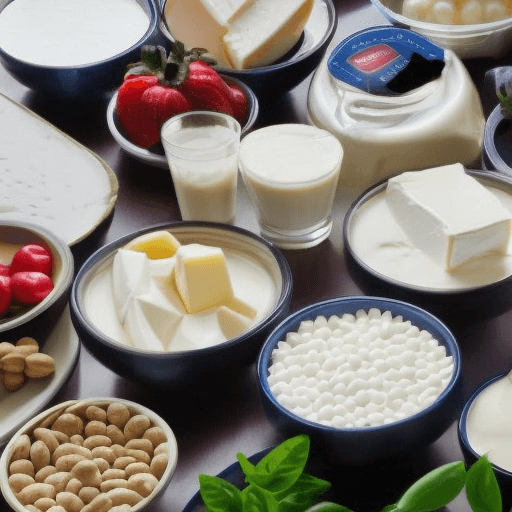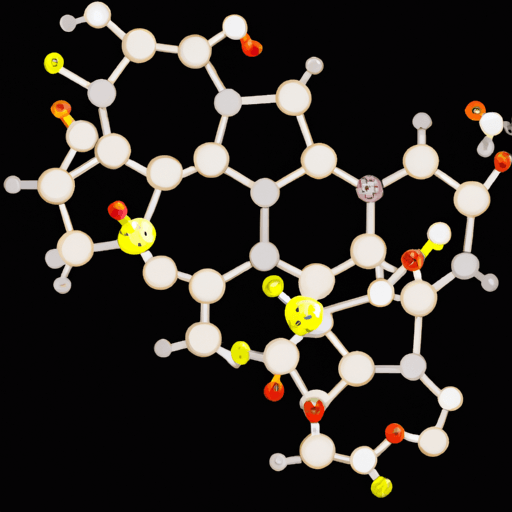Is milk an acid or base?
Let’s discuss the pH levels of milk and explain how it can be used as either an acid or a base.
Milk is slightly acidic, with a pH of around 6.5 to 6.7 making it a weak acid.
5 Facts About The Acidity of Milk
- Milk is a weakly acidic liquid with a pH between 6.5-6.7
- The acids in milk include lactic acid, citric acid, and phosphoric acid
- Fresh milk has a near-neutral pH that decreases as milk ages and acidity increases
- Milk’s mild acidity helps preserve it and prevent spoilage
- Milk contains compounds that buffer against large pH changes
So while not highly acidic, milk does fall on the acidic side of the pH scale rather than being a base.
The acids and buffering compounds in milk contribute to its flavor and shelf life.

This means that milk is classified as a slightly acidic food and falls within the range of foods considered to have acid ash when digested in the body – that is, foods like milk produce acids that can be absorbed into our bodies when they are broken down during digestion.
What is milk an acid or base?
Milk is slightly acidic, with a pH of 6.4 to 6.8, depending on how it is processed.
Explain it to a child
The pH of milk is slightly acidic, around 6.5 to 6.7. This means that milk is a slightly acidic food and falls within the range of foods considered to have acid ash when digested in the body. In other words, when we eat foods like milk, they produce acids that can be absorbed into our bodies during digestion.
This slightly acidic nature of milk gives it its creamy flavor – some even argue that it’s the slightly sour taste that makes for the deliciousness of certain dairy products like cheese and yogurt.
The acids in milk also help protect against bacterial growth, keeping it safe to consume.
Milk definitely has its benefits, even at this slightly acidic level, as these acids act as a preservative while also delivering vital nutrients like calcium and protein.
Why is milk acidic?

The acidity of milk is due to the presence of lactic acid and other acids like citric acid and phosphoric acid.
Lactic acid in particular contributes to the sour taste of milk and is produced by bacteria as they ferment lactose and other milk sugars.
Fresh milk right from the cow is close to neutral with a pH of around 6.7.
As it ages, the pH decreases and it becomes more acidic. The acidic environment helps preserve the milk from spoilage by discouraging microbial growth.
While milk is acidic, it does not contain high enough levels of acids to be corrosive or damaging like stronger acids such as hydrochloric acid or sulfuric acid. The acidity in milk is mild.
Milk also contains buffering compounds like proteins, calcium, and phosphate that help prevent large pH changes when acids or bases are added. This helps stabilize the pH in the optimal range for milk.
Milk contains lactic acid, which is why it is a bit more acidic than plain water.
- High concentrations of lactic acid in milk help to protect against contamination from bacteria and enzymes present in the milk as well.
- Various animal feed and grasses contain high amounts of minerals that alter the pH level giving the milk a slightly sour taste.
- The fermentation process used to make yogurt also plays a role in altering the levels of lactic acid in milk which makes this type of dairy product higher in acidity than regular milk.
The unique combination of proteins, minerals, sugar, and fats found in milk creates an asset to many individuals’ diets due to its nutritional value, even with its slightly acidic flavor.
Is milk a strong or weak acid
Milk is a complex solution of proteins, sugars, salts, and organic acids.

From an acid-base viewpoint, milk is neither a strong nor weak acid.
Depending on the composition of its components, it can act as either an acid or a base in order to achieve an overall neutral pH.
- The milk’s ability to shift between an acidic or basic state allows it to act as a buffer solution and protect the proper functioning of biological systems that rely on a delicate balance of pH levels.
- In fact, many dairy products are produced with a specific composition that adjusts their pH level to achieve tartness or sweetness as desired by food product manufacturers.
Ultimately, milk is not simply categorized as either an acidic or basic substance but rather finds itself somewhere in between these two ends of the spectrum.
Is milk high in acid?

Milk is generally considered to be acidic in nature, ranging from slightly acidic at around 6.5 pH to highly acidic at around 4.6 pH depending on the animal type and how it was processed.
This means it is slightly less acidic than water, which has a neutral pH of 7.0, but considerably more alkaline than vinegar or lemon juice, both of which have a pH of 2!
It is important to point out that this acidity doesn’t reflect the taste of milk – as anyone who has ever enjoyed a glass of cold milk will confirm – but instead gives insight into its healthfulness.
How much acid does milk have?
It may come as a surprise, but milk contains some degree of acid.

Though it is often thought of as neutral or basic, Cow’s Milk has an overall pH level of around 6.5 to 6.7, making it slightly acidic on the pH scale.
This is the result of many acids involved in the production of milk, including lactic and fatty acids created during digestion and lactose degradation.
The amount of acid present in milk depends on several factors, most notably diet and breed type; for instance, cows that graze primarily on grass will produce less acidic milk than those given protein-rich feed concentrates.
Surprisingly enough, humans require high levels of acidic substances to digest the proteins found in Dairy products effectively!
What type of acid is milk?
Milk contains a range of compounds, but its most abundant is lactic acid.
- While usually referred to simply as milk acid, this substance is actually a type of carboxylic acid, specifically an alpha hydroxy acid.
- It plays an important role in the flavor and sourness of dairy products, acting as a preservative that can enhance shelf life by slowing spoilage due to bacterial activity.
- Interestingly, its production occurs naturally within milk itself when bacteria act upon natural sugars found in the liquid, releasing lactic acid as waste.
Furthermore, it can also be produced synthetically through the fermentation of other compounds such as glucose or sucrose.
Why does milk cause acidity?
Milk may seem like a healthy, wholesome drink, but it can be surprisingly acidic.
The citric acid and lactic acid present in milk can be tough for your stomach to digest, especially if you’re lactose intolerant.
- Additionally, the high-fat content of milk can stimulate the production of excess stomach acid.
- Oftentimes, drinking milk will lead to symptoms associated with indigestion such as bloating or discomfort in the abdominal area.
Those who are prone to acidity should limit their consumption of dairy products and opt instead for lower-fat alternatives like almond milk or rice milk.
Does milk act as a base
Milk actually acts as a base!
This means that when mixed with an acid, the composition of the liquid changes and it becomes neutral.
This makes milk preferable for neutralizing acid-base reactions, meaning it can be used to prepare countless different recipes and dishes.
And aside from helping to create tasty treats, this reaction also helps in activities such as cleaning or gardening.
Milk serves as a seemingly unlikely but incredibly helpful tool around the house!
How milk can be used as an acid or base
Milk is a versatile food item that has long been included in many diets for its health benefits; however, few people know that it can also be used as an acid or base.
Milk contains lactic acid, giving it a slightly acidic pH of 6.6.
This makes it suitable for use in baking recipes to activate baking powder and to offset the effect of baking soda which is alkaline based.
In addition, milk curdles when combined with acid-based sauces or toppings, create a creamy texture that is perfect for adding to portions of pasta and pizzas.
On the other hand, when combined with an alkaline base, such as baking soda, milk helps make mixtures less acidic while keeping them below their natural pH level.
By mixing milk with these substances gently and carefully, you can alter the pH levels of your recipes without sacrificing their taste or texture!
Even though it’s slightly acidic, good-quality milk can still be considered an essential part of any healthy diet.
Article Sources
Jacks of Science sources the most authoritative, trustworthy, and highly recognized institutions for our article research. Learn more about our Editorial Teams process and diligence in verifying the accuracy of every article we publish.
